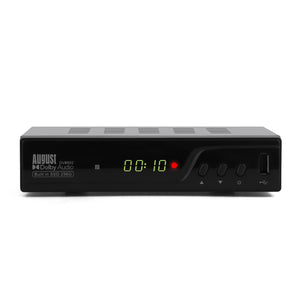As technology marches onwards, some of the latest developments get retroactively applied to what many might consider "antiquated" products. We stick to our ideals here at Daffodil and maintain that the humble Freeview box deserves a place in 2024!
But, I digress. The most recent innovation making its way into retro tech like set top box recorders is the m.2 SSD. There's a few things to unpack there for a product that normally uses a simple USB.
What's an SSD compared to, for example, a USB that we're all familiar with? Why are they being introduced to Freeview recording boxes? What does SSD stand for?!
All this and more in this little product guide for the brand new DVB502 with, you guessed it, SSD storage.
SSD: What Does it Stand For?
First and foremost, SSD stands for Solid State Drive. Unpacking what that really means for us as TV-watchers is another ball game!
Let's start with "Drive". Just like a "Hard Disk Drive" (HDD) or "Pen Drive" (USB), a "Solid State Drive" is also a type of storage. In the same way you can keep computer files, media, driver files and downloads etc on a USB stick or hard drive, you can do the same on an SSD.
Now the other words, "Solid State". Unlike a HDD which needs a disk to write and store data, an SSD instead uses semiconductors and electronic processes to store data. There's no needle writing data onto a spinning disk, it's just a "solid" block of tech.
So, to wrap that all up, an SSD is a type of storage unit that doesn't need to use a disk to physically write data, instead being purely electronic.
Why Are SSD's Good For TV Recording?
Now onto the real juicy stuff: the benefits of SSD's for Freeview recording boxes! As SSD's don't rely on a physical disk being read and written, their speeds are orders of magnitude higher than a HDD, or especially a USB.
On a USB set top box the live TV recording file has to pass from the box, out the USB port and be written externally. What this also entails is having to read USB data when there's playback. This creates a sort of roadblock, where any processing power in the set top box is restricted to the speed of the USB and its port.
On an SSD Freeview recorder, the SSD is internally built and accessed seamlessly, with no external ports to create a bottleneck. Not only that, but when data is read and written the SSD can keep up with the power of the TV box, providing instant access to your recordings with original HD video.
This increased coherency and efficiency also means the dual-tuner set top boxes can record two HD channels more smoothly, as data is passed that much faster.

The final key benefit is capacity ratio. While there are 256GB hard drives, they are larger and clunkier than a 256GB SSD, which itself is more similar in size and shape to a pack of gum. With no extra weight, no larger unit and no extra power the SSD upgrades the set top box immeasurably.
The only downside is the storage is entirely internal. This means you can't swap out the SSD inside for another one when it's full, so eventually you'll have to delete old recordings. However, you'll only have to delete them after at least 100 hours of recording! And that's if all your recordings are HD 60fps, which not all channels are!
In a Nutshell: SSD Set Top Boxes
What They Are:
SSD Set Top Boxes are Freeview Recorders with internal SSD storage for your recordings.
Why They Are Better:
SSD storage allows efficient, high-quality recording and replay of full HD 1080p channels as well as 100+ hours of capacity for recordings.
Things to Consider:
If you don't want to eventually delete old recordings, you'll still need a USB to store extra on.


Leave a comment